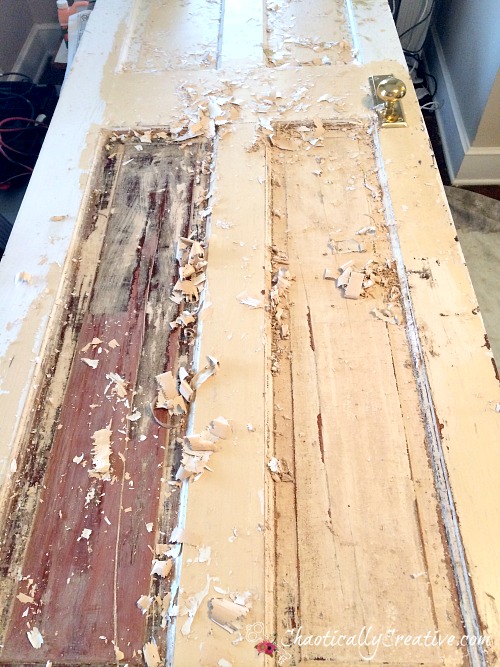Here at Chaotically Creative, I blog about my 100 year old home and Lesley blogs about projects within her new home. In this multi part series, I will be sharing some challenges that are unique to old houses. So here we go…
Old House Issues: Stripping Multiple Layers of Paint. The plan was to do some light sanding and wood filling to the painted wood molding and door in the office. It did not take me long to figure out I had a problem. The white paint I was attempting to sand starting cracking like an egg shell and falling off in chips. Upon closer examination, I figured out that someone had painted latex over multiple layers of old enamel without any bonding agent (note: the multiple layers were not revealed until the stripping process began. In other words, it is hard to tell what you are getting yourself into. Oh and that is another characteristic of an old house, nothing is as easy as it seems.
Warning!
Stripping multiple layers of paint is not pretty! Do not attempt unless you are, crazy, determined and refuse to give up and can cope with a BIG giant mess! This post is not pretty. There are no pretty pictures. Just a mess of bubbly gobbly goo. No new shiny tools either. Mine are all worn in.
Having said this, stripping is somewhat therapeutic in a weird sort of way. As I stripped away the layers, I found myself thinking about things that I have not thought of for years. Every time I started working on this door, memories of a high school girl friend kept popping up. I don’t know if it was the color of the old paint that maybe reminded me of her house or what. It is what I call Evoking Vintage Memories.
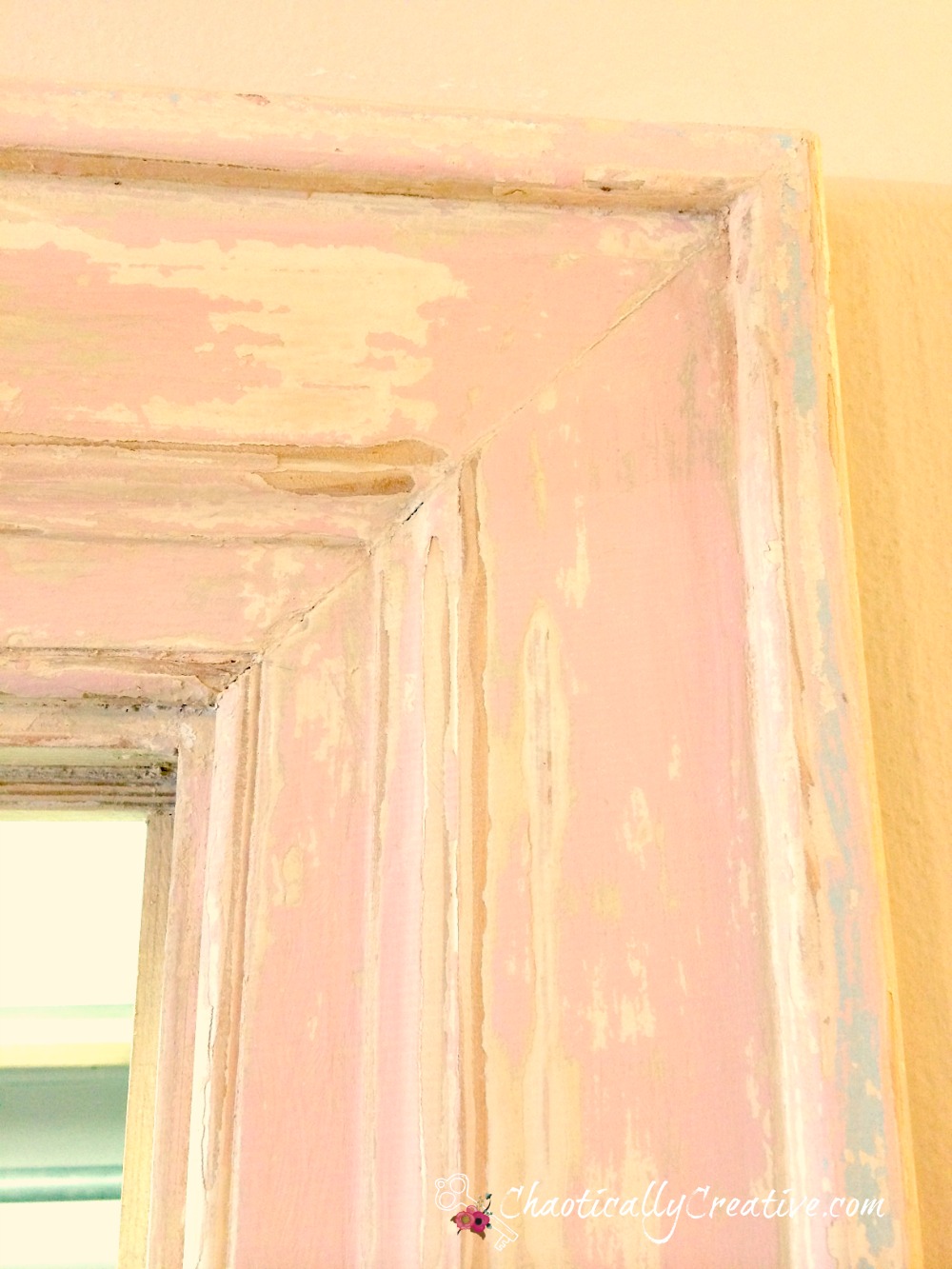 Did you know that paint stripping is best done outside when it is hot? The heat of the sun speeds up the process. However, it was cold and rainy when I started this project so it was done indoors. Below are 4 basic items needed for paint stripping.
Did you know that paint stripping is best done outside when it is hot? The heat of the sun speeds up the process. However, it was cold and rainy when I started this project so it was done indoors. Below are 4 basic items needed for paint stripping.
The roll of brown paper is use to protect the floor. Striping multiple layers of paint is messy business and protecting flooring and surrounding areas is a must! The 8 in 1 Tool is really all you need to scrape off the paint and of course a good pair of Gloves
and Particulate Respirator
are essentials as well. It also does not hurt to wear Economical Safety Glasses, Clear to avoid any getting into your eyes. I also found that a pie tin for collecting the goo and plastic grocery bags for discarding very helpful. I also discovered that spraying the 8 in 1 tool with WD-40 really helped keep the goo off the scraper and at times I needed another scraper to scrap the goo off the 8 in 1 tool. And, I had a heck of a time keeping it off the bottom of my shoes. I had to keep another pair close by.
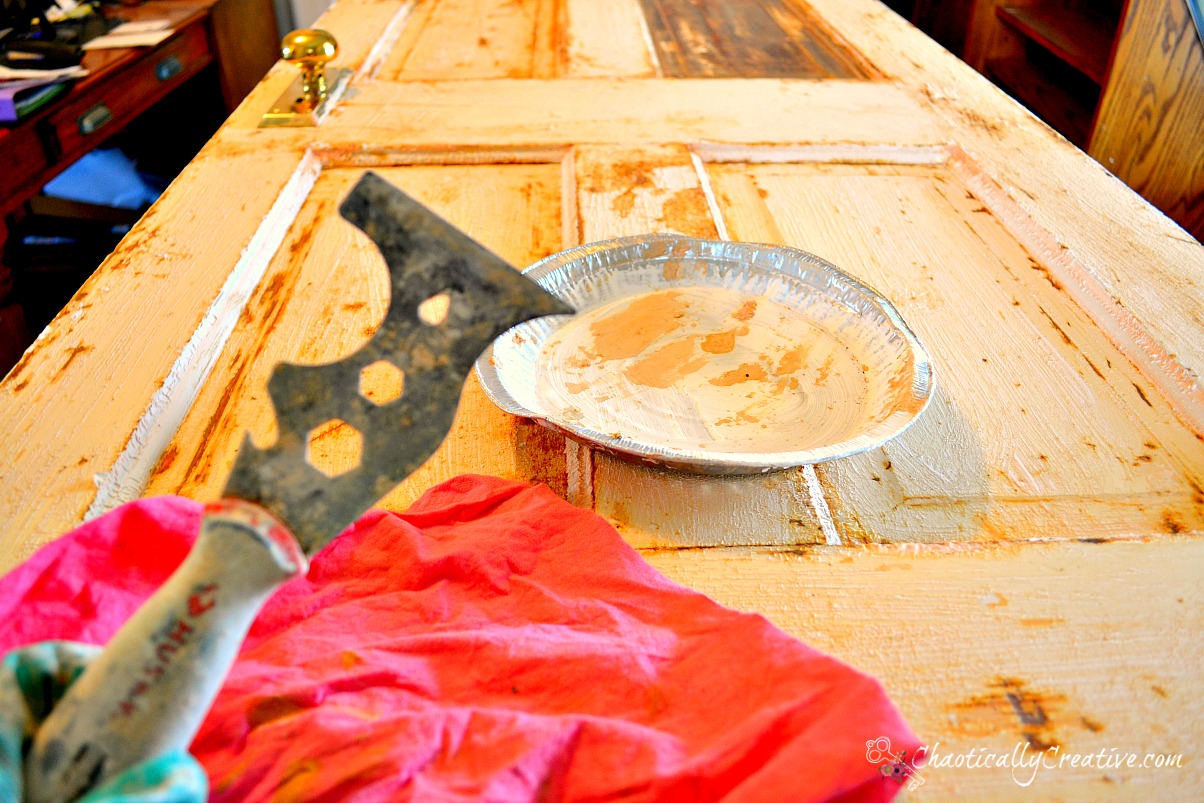 I started with the closet door and frame. Since stripping is much easier done horizontally, I removed the door from it’s hinges. (FYI, it is much easier to remove a door than to put it back. Putting it back is a two person job).
I started with the closet door and frame. Since stripping is much easier done horizontally, I removed the door from it’s hinges. (FYI, it is much easier to remove a door than to put it back. Putting it back is a two person job).
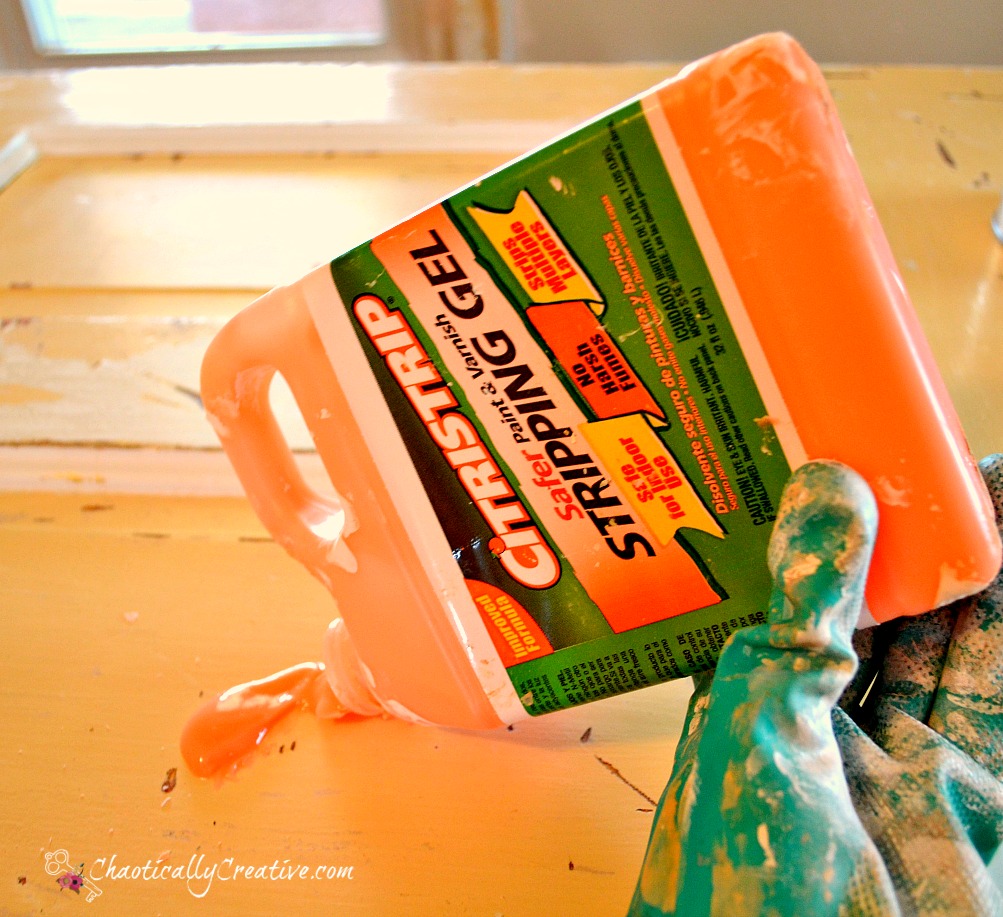 Since I was working inside, I chose Citri-Strip for the job. It worked really well and had a very pleasant smell. Since I suspected this was going to be a lengthy process (and I was right) I did not want anything with a “brain cell killer “chemical smell. It took two small bottles to do this door, so I would have been better off buying the gallon size. I just poured it onto the door directly out of the bottle and spread it around with an old paint brush.
Since I was working inside, I chose Citri-Strip for the job. It worked really well and had a very pleasant smell. Since I suspected this was going to be a lengthy process (and I was right) I did not want anything with a “brain cell killer “chemical smell. It took two small bottles to do this door, so I would have been better off buying the gallon size. I just poured it onto the door directly out of the bottle and spread it around with an old paint brush.
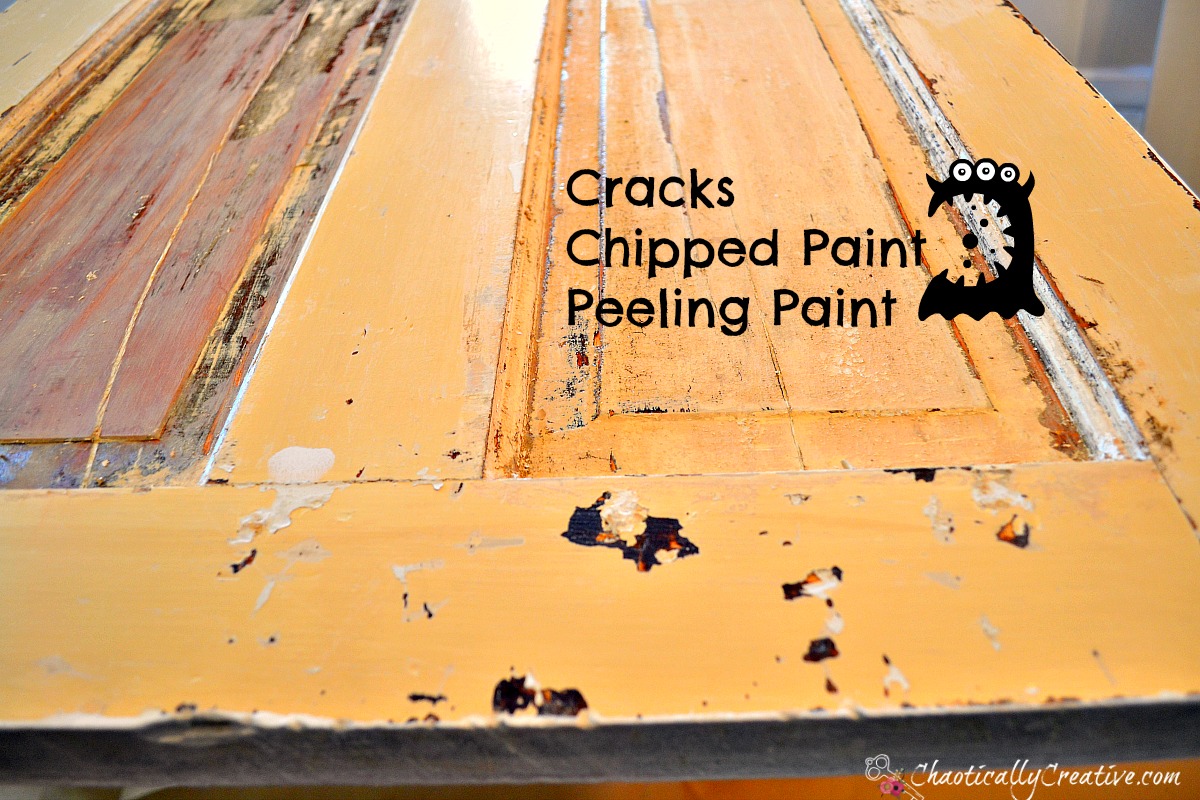 I knew right away that this door would have to be repainted. It has long cracks in 2 of the panels. and the chipping paint all over made it necessary to strip down to the wood for a smooth finish. Also, stripping revealed that repairs had been made over the years that were not very pretty and needed to be covered by paint. Check out the door frame leading to the dining room.
I knew right away that this door would have to be repainted. It has long cracks in 2 of the panels. and the chipping paint all over made it necessary to strip down to the wood for a smooth finish. Also, stripping revealed that repairs had been made over the years that were not very pretty and needed to be covered by paint. Check out the door frame leading to the dining room.
 Stripping Multiple Layers of Paint off this door frame reveal many different pieces of wood and trim that had been added on. It appears that this might have been and exterior door at one time as well. So after sanding, caulking and repairing this will have to painted. No stain worthy wood here. Also it is not necessary to strip down to the bare wood if you can get to a point where the surface is smooth, not sticky and will allow a fresh coat of paint to adhere. The green on this door frame is an example of this. Caution: When working on older homes, chances are you will be dealing with lead paint. Be sure and take precautions when choosing stripper, sanding and disposal)
Stripping Multiple Layers of Paint off this door frame reveal many different pieces of wood and trim that had been added on. It appears that this might have been and exterior door at one time as well. So after sanding, caulking and repairing this will have to painted. No stain worthy wood here. Also it is not necessary to strip down to the bare wood if you can get to a point where the surface is smooth, not sticky and will allow a fresh coat of paint to adhere. The green on this door frame is an example of this. Caution: When working on older homes, chances are you will be dealing with lead paint. Be sure and take precautions when choosing stripper, sanding and disposal)
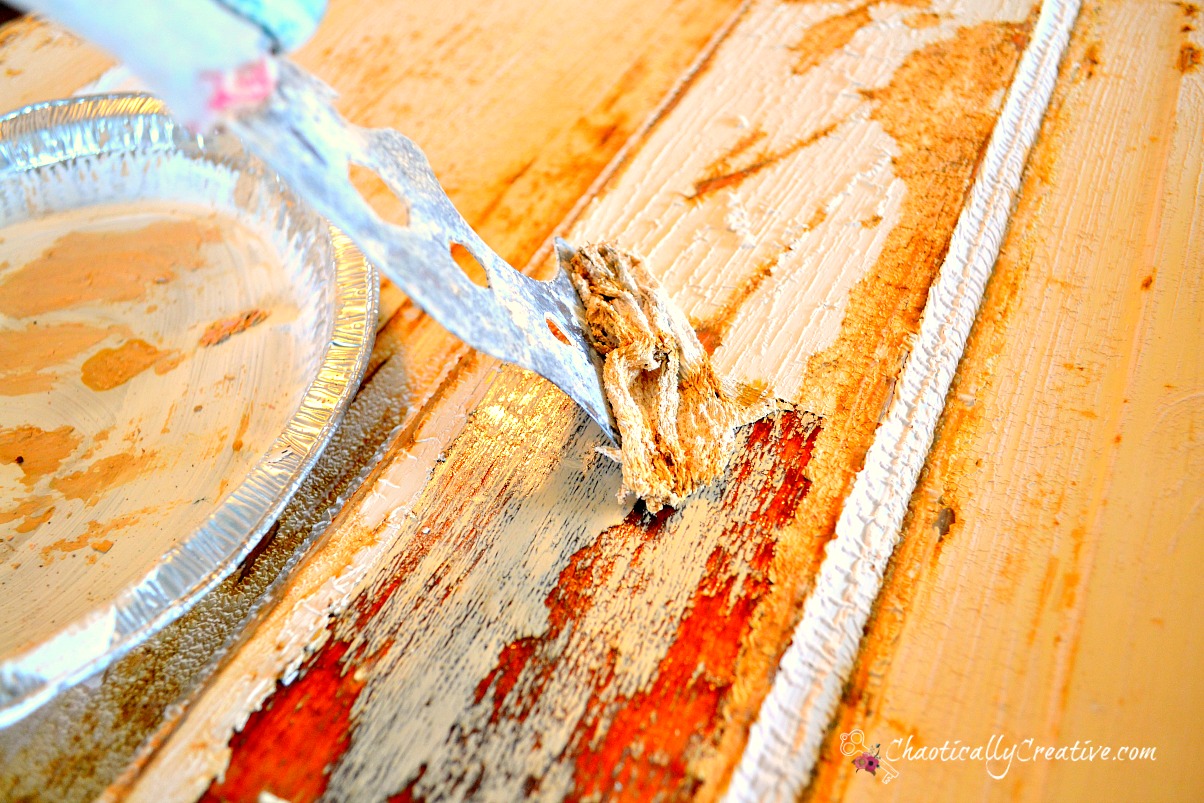 Stripping multiple layers of paint is pretty simple. Simple yes. Easy, not so much. It takes patience and elbow grease. Sometimes it comes off easy peasy and other times it can be quite stubborn. Basically you apply the stripper, wait for it to bubble up and scrap it off and then repeat and repeat and repeat. I found that the Citrus Strip worked very quickly one layer at a time. Leaving it overnight, thinking it would loosen the next layer really did not work. It was easier to scrap it off one layer at a time.
Stripping multiple layers of paint is pretty simple. Simple yes. Easy, not so much. It takes patience and elbow grease. Sometimes it comes off easy peasy and other times it can be quite stubborn. Basically you apply the stripper, wait for it to bubble up and scrap it off and then repeat and repeat and repeat. I found that the Citrus Strip worked very quickly one layer at a time. Leaving it overnight, thinking it would loosen the next layer really did not work. It was easier to scrap it off one layer at a time.
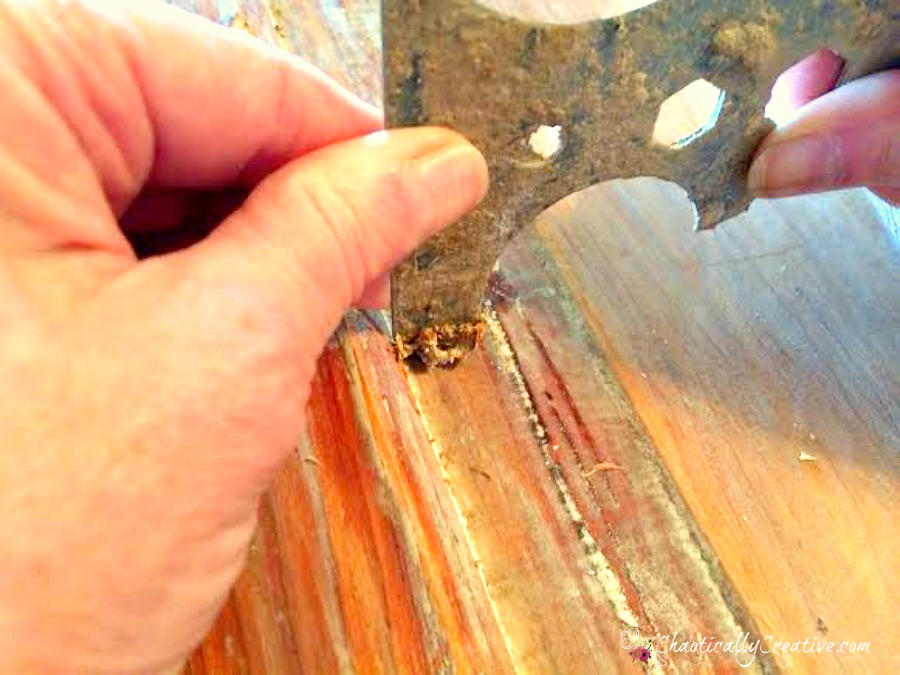 By grabbing both side of the 8 to 1 tool and pulling along the narrow edged of the trim, you can remove the goo and create a crisper edge when painted.
By grabbing both side of the 8 to 1 tool and pulling along the narrow edged of the trim, you can remove the goo and create a crisper edge when painted.
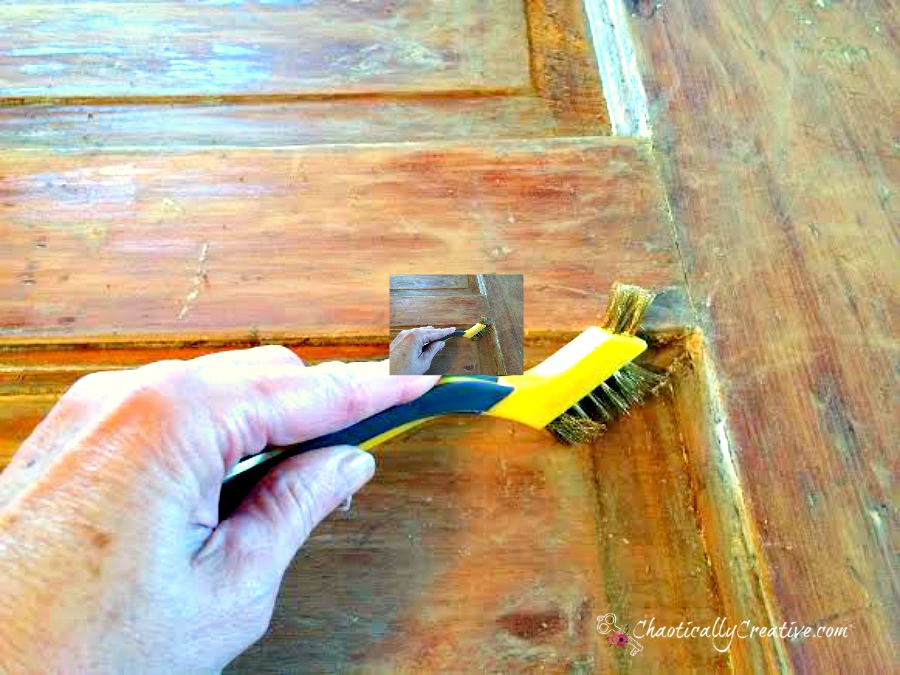 When you have gotten as much goo off as possible with the scraper, pour some low odor paint thinner or mineral spirits into a container. Dip a wire brush and scrub out the nooks and crannies. Scrub the remainder of the door with a piece of steel wool dipped in remover. You will be surprised at how much more come off.
When you have gotten as much goo off as possible with the scraper, pour some low odor paint thinner or mineral spirits into a container. Dip a wire brush and scrub out the nooks and crannies. Scrub the remainder of the door with a piece of steel wool dipped in remover. You will be surprised at how much more come off.
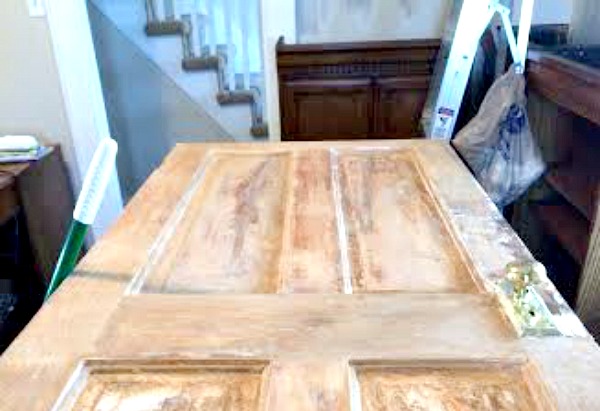 The door is almost ready for the next step which is fixing the cracks, smoothing out and painting. Stay tuned to see my newly discovered technique. Until then, Happy DIYing!
The door is almost ready for the next step which is fixing the cracks, smoothing out and painting. Stay tuned to see my newly discovered technique. Until then, Happy DIYing!
 Love DIY ??? Try Our DIY Fashion Fix For Your Underwire Breakthroughs! Order Here!
Love DIY ??? Try Our DIY Fashion Fix For Your Underwire Breakthroughs! Order Here!
